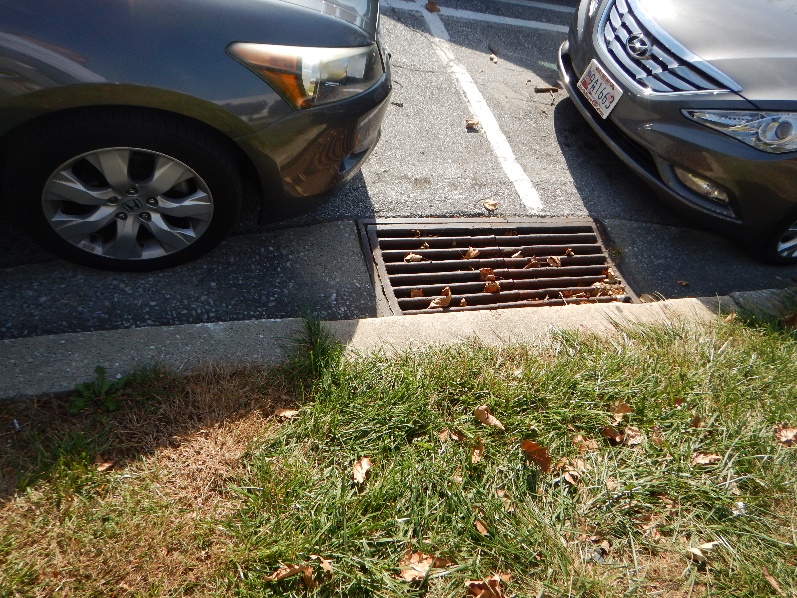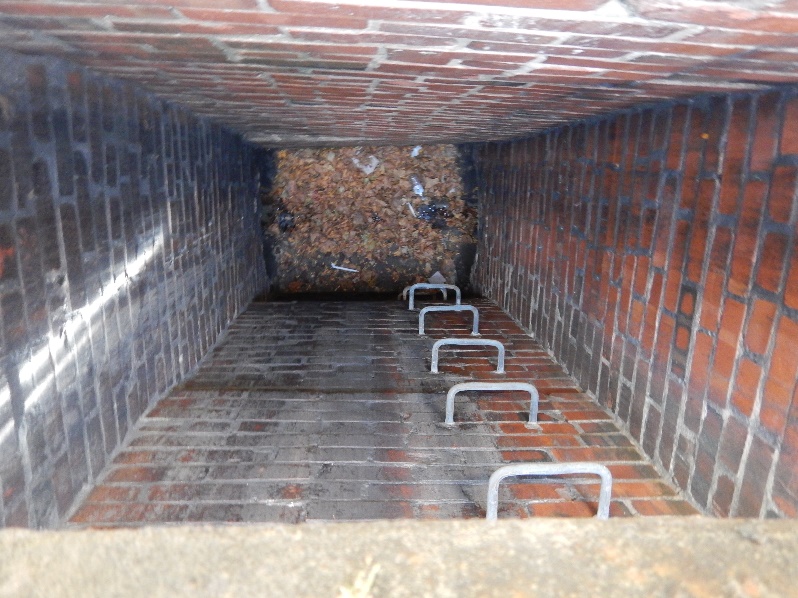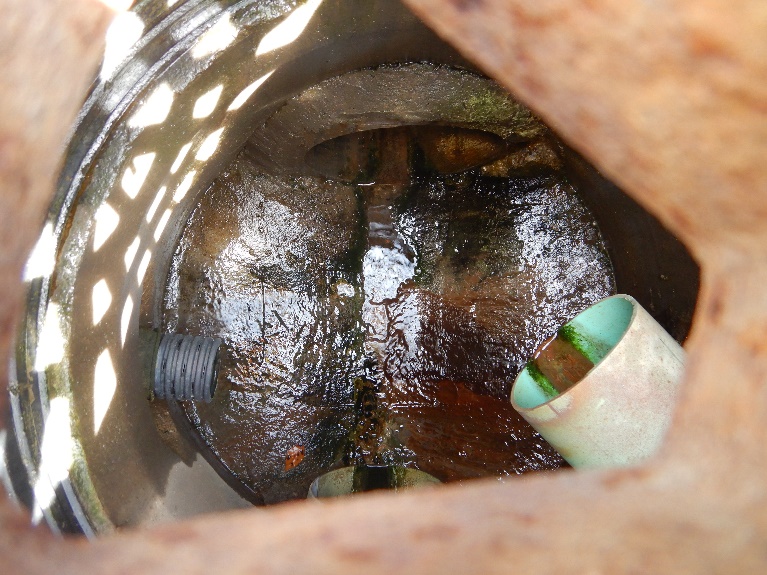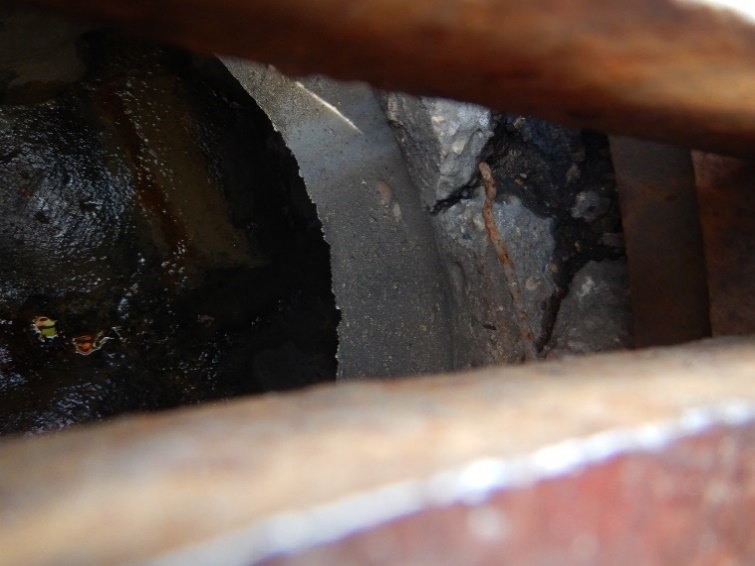
What am I looking for? First, I look at the construction. The common in-pavement structures are sanitary sewer manholes, stormwater inlets and catch basins, and utility vaults such as electric and telephone/fiber optic. Concrete pipe is common construction. Older manholes can be constructed of brick and mortar. At the top of the structure can be concrete adjusting rings or, sometime, concrete bricks. A cast iron frame and lid for sewers or frame and grate for stormwater is set in a mortar bed.
Then the condition is observed. Is the manhole or frame level? An out of level frame & grate signals potential weakening of the structure. If this is the case, it is likely that the adjusting rings or mortar has deteriorated. The photograph presents a deteriorated ring. Note the cracking, reinforcing wire, and soil infiltration. A deteriorated ring, under traffic loads, will cause the casting to move and shift. The deterioration which allows soil to infiltrate will eventually create a void on the side of the structure. Replacing the rings, resetting the frame, and pavement patching is the typical repair. If the structure is brick, tuckpointing and skim coating or parging can be an effective first repair. The photograph shows a brick structure in very good condition. If deterioration was present, the mortar would be broken, and the bricks would have spalled. As deterioration progresses, we should expect to see shifting bricks and vegetation growing through broken mortar.

Is the manhole full of debris? If so, the manhole should be vacuumed. A catch basin is designed to collect debris from the stormwater runoff. Debris remain at the bottom of the structure while stormwater flows through a pipe above the collection zone. Proper catch basin functioning requires removal on a regular basis. A maintenance contract with a vacuum company is a good practice.

Above is the interior of a precast concrete structure. There is a lateral pipe on the right side, possibly from a roof drain. Water flows from the bottom to the top of the photo. What is of interest is the black corrugated pipe at the left side. This is a perforated pipe used to collect excess subsurface water and carry it to this structure. This means water had been (and may still be) an issue related to pavement performance. This should be reviewed before embarking on a major maintenance and rehabilitation program.

With scheduled inspections you can catch drainage structure deterioration before a cavity forms and creates a safety issue. In cold climates with frequent freeze-thaw cycles, we recommend examining structures, particularly stormwater each quarter. For warmer climates, an annual inspection will suffice.
Zimmer Consultants photographs